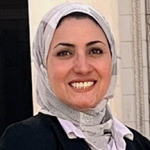In Egypt it is estimated that the majority of the country’s 40 million urban residents, which include 11 million young people, live in informal urban areas. Previous studies have demonstrated that there is considerable diversity in informal areas in terms of physical characteristics and basic infrastructure, yet there has been much less research assessing access to health and social services in informal areas. Young people growing up in informal areas are a particularly vulnerable group, and their access to such services is critical for their wellbeing and human capital development. In this paper, we use a mixed methods approach to assess different dimensions of youth access to health, education and cultural/recreational services across informal areas of Greater Cairo. Results from the Survey of Young People in Egypt – Informal Greater Cairo showed that youth perceptions of the geographic accessibility and affordability of services was generally high, but perceptions of service quality were considerably lower. There was also inequality in perceptions of the geographic accessibility of services by neighborhood-level wealth status, particularly for education and health services. A more in-depth case study of service access in informal areas of Shubra el Kheima, which is part of Greater Cairo, highlighted that concerns about service quality in informal areas should be contextualized within young people’s broader sense of marginalization and neglect of the area. We conclude that policy towards upgrading of informal areas in Cairo needs to adopt a more comprehensive and participatory approach that addresses health and social services as well as basic infrastructure.

Authors
Maia Sieverding
Assistant Professor, Faculty of Health Sciences, American...

Research Fellows
Rania Roushdy
Associate Professor of Practice, Department of Economics,...

Research Associates
Rasha Hassan
Research Consultant

Authors
Ahmed Ali
American University of Beirut


